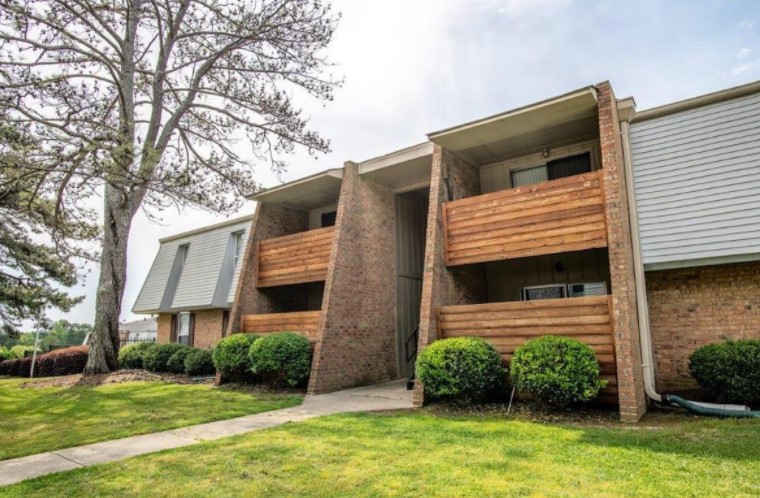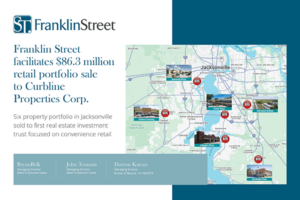Competitive apartment market spells high demand, fewer sweet deals as industrial job centers grow along metro Atlanta interstates.
Across metro Atlanta, affordable apartments are becoming scarce – and not just for renters. Investors are also seeing a price spike as industrial and manufacturing jobs lineup alongside metro Atlanta interstates.
To understand which markets are heating up for multifamily investment sales, “follow the jobs,” especially in the logistics industry and close to distribution centers, say Jake Reid and Chad DeFoor, who head multifamily investment sales for Franklin Street’s Atlanta office.
Clayton County, for example, needs workforce housing for people who work at the airport and logistics hubs. “That’s where we’re seeing a growing demand for multifamily property for renters, which, in turn, is attracting investors,” Reid says.
And to find the jobs, follow the interstates, where industrial jobs in manufacturing and warehousing are centered, says DeFoor. With the recent news that automaker Rivian is joining Hyundai, Mercedes Benz, BMW and Kia to manufacture in the south, the demand for housing grows. “If you think of it as a solar system, automakers are the sun,” DeFoor said. “They have gravity that attract more companies, like planets, and all of the workers for all of the companies will need a place to live close by.”
DeFoor expects more “reshoring,” as jobs that went overseas return to the United States. And those jobs aren’t just resurfacing in manufacturing strongholds like Detroit. In fact, A-Town may just be the new Motown. “Everyone is looking for shorter supply chains, and it cuts down shipping dramatically to manufacture here, closer to the end consumer,” he said.
Renters likely have noticed that rents are on the rise — across all types of apartments — in line with the Consumer Price Index, according to Franklin Street’s Q3-2021 Atlanta Multifamily Market Report. The report shows rents increased about 5 percent over the previous quarter. And even workforce housing is feeling the pinch, as less premium Class B and Class C properties also are seeing demand skyrocket from renters and investors.
The report says the multifamily sales market is recovering nicely from the pandemic, supported by healthy fundamentals such as low unemployment rates, a diverse job market, and an average household income in metro Atlanta that continues to rise ($172,786 in 2020 according to data from Moody’s). DeFoor said many properties are selling now after cleaning up the books from pandemic impacts (like late rent payments).
For renters and investors seeking to get into the market, it’s competitive, and finding deals is getting much harder, says Reid.
Sales volume across all multifamily asset classes reached over $2 billion in the third quarter — with Class A properties representing 49.75 percent of sales, followed by Class B properties at 38.34 percent, and Class C properties at 11.91 percent, according to the report.
Reid says to expect Class C sales to be on the rise in popularity, as the one-time wallflower of apartment investments now becomes the belle of the ball.
Once overlooked, Class C apartments are becoming much more popular for investors and often remain one of the more affordable options for renters. Class C apartment investments are typically defined as those that are more than 30 years old, located in more far-flung locations, and in need of renovation. Class A apartments typically are less than 10 years old with 9-foot ceilings and are located in denser and/or more desirable submarkets.
…
Another factor driving apartment sales is foreign investors looking to buy in the South because returns are so much higher in the U.S. than in other markets, especially Europe. And real estate has become a “core” investment, no longer considered “alternative” as it was just a decade ago, Reid says.
Atlanta is very hot because demand for housing, both rental and purchase, is driven by good weather and good jobs, as well as a desire to live as close to the urban core as possible.
“With less than 3 percent unemployment in the Atlanta market,” Reid says, “the area fundamentals are here to invite migration. We still have relatively affordable rents and people are looking to move here.”
Relativity is key — while rents in the South continue to be lower than other U.S. metros, for the South, they are trending higher.
And with many people still having the option to work from home, they want more space. This is driving the build-to-rent single-family home phenomenon, which is gaining steam across the South, particularly metro Atlanta, Reid says. These projects are either attached townhomes or detached single-family homes, and often come with apartment complex amenities, such as a pool, clubhouse, and social events on top of a personal backyard, all with an easy, manageable, low-maintenance lifestyle compared to homeownership.
Multifamily projects will continue to be built further into the suburbs because of lower land costs, but urban core properties are not suffering. “Generally populations will be moving back into cities,” he said.




